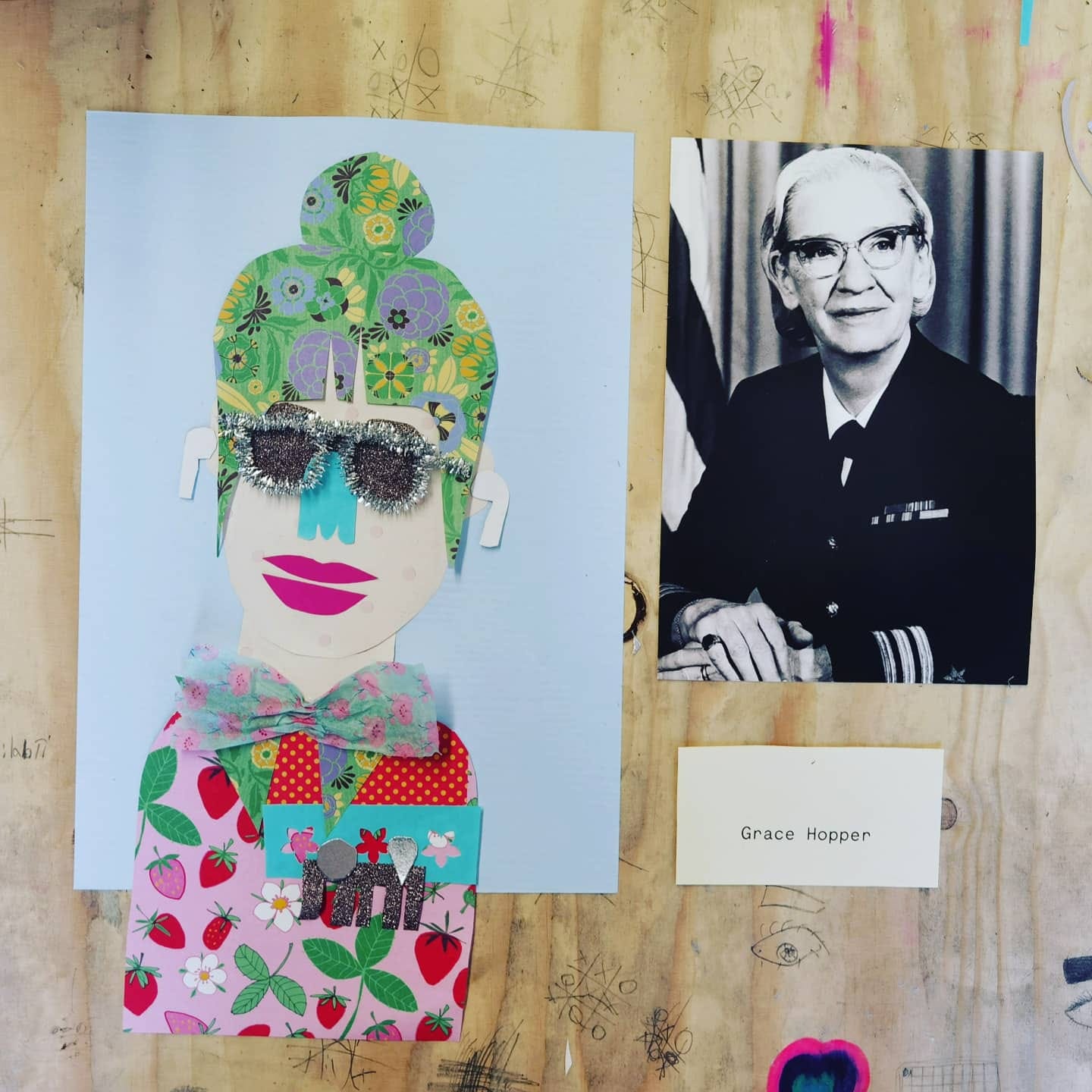No. 13 — Teaching the history of computers🏺Lineage 👪 History as Wall Art
“The past is reinvented and becomes the future. But the lineage is everything”
My name is Linda. I write a bi-weekly newsletter about computer science, childhood and culture - and there are 9540 of you listening. If you enjoy this issue, please share it with anyone you think may find it useful.
Back to somewhat regular writing. Thank you for the pouring of feedback and ideas on the last issue ( - you can also leave them as comments below for everyone to learn from.) I’m going to keep thinking about this space that is opening up, somewhere between small group learning and producing online experiences. More in a few weeks.
Meanwhile: the promise of daffodils! Apricot jam! Crunchy fennel in everything I cook!
Last week I started reading Harry R. Lewis’ Ideas That Created the Future: Classic Papers of Computer Science. It’s a book based on a course Lewis has been teaching for years and covers forty-six classic papers in computer science that map the evolution of the field from Aristotle to Donald Knuth. Not surprisingly, I love it.
There is a 2014 lecture by said Donald Knuth on the topic of “Let’s Not Dumb Down the History of Computer Science” where he makes an eloquent argument for looking deeper into the history of technical ideas around computers, learning from the past and making sure the documentation survives to the future. Lewis’ book is a collection of these original documents and ideas that shaped our world. I’m not sure if the book will create joy in the general audience (a few recommendations on that later), but for me it helps to place computer science in the context of its intellectual lineage.
And I keep thinking about Philipp Glass and his ideas of lineage in the book Words without Music. “The past is reinvented and becomes the future. But the lineage is everything” he says. We should focus less on trying to act and predict our legacy (very true with technology and it’s bombastic optimism) and focus more on understanding the chain of people and ideas - the lineage - that brought us here.
I don’t know whether it’s because most of us associate history with ancient wars, kings and archeology, whether it’s because writing about computer science can feel boring, math intense and thus remote or whether it’s the disdain for history many programmers hold, it’s rare to see writing about the history of computer science that manages to make it feel alive.
Maybe we should teach backwards (- where did this come from)? Maybe we need more stories, less dates?Egyptians, Babylonians, Romans, Victorians - how they saw the computer? Important pieces of code? More playing with primary sources? Relationships of people? A family tree of companies?
I wish to slowly see the history of computers and technology in general to be included in history curriculums in primary schools. These portraits of famous computer scientists are from last summer, by a group of schoolgirls. Not much on the historical content here, but I’m hoping they’ll have a memory of making acquaintance if they ever run into the names when older.
Linked List
In computer science, a linked list is a linear collection of data elements whose order is not given by their physical placement in memory. But here it is a selection of things I’ve been reading lately.
Teaching any kind of history is a balancing act, and computer science especially has a lot of unwritten and complicated storylines. Mar Hicks teaches this diversity of stories, Julien Dorra runs an interesting course on tech design and Audrey Watters maps the history of teaching machines.
I think there is a missing pop science book on computer science and it’s history, but so far I’ve enjoyed The Information by James Gleick. This Github repository also has a lovely list of documentaries and other resources.
I’m a sucker for UI history: old control panels, evolution of scrollbars. These IBM sample kits of ancient tech are like tiny museums of time, technology and human ingenuity.
History as Wall Art. I’ve been collecting ways we map time, ideas and terrains for a while and this is the best introduction.
Classroom
I’m hoping to surface and share stories from all of you and I’d love to see your creations! Here are a few teachers using Ruby in creative, fun and inspiring ways:
Make the Hello Ruby computer interactive with Makey Makey and this step-by-step tutorial by Denise
Things third graders in Helsinki wonder about when it comes to technology, computers and code.
Felt computer and other inspiration for a workstation from Vietnam
Or hit reply and answer below:
What role does history play in your field/discipline?
Who are the superstars of computing for you? How has their role changed?
How did you learn about the history of computers/technology?





Great to see you embracing the history aspect. Please see https://thecodeshow.info/ this is what i do here in the UK in addition to my work in school.